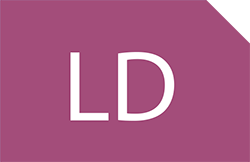Originally published by The Center for the Collaborative Classroom
We certainly know a great deal now about what is required for students to learn to read. The science of reading brings us over 50 years of accumulated and convergent research from multiple fields. The Simple View of Reading gives us a picture of what is needed in both decoding and language comprehension to lead to skillful reading (Gough & Tunmer, 1986). Similarly, Dr. Hollis Scarborough created a theoretical framework that illustrates the foundational components of reading and their interrelationships in the strands of the Reading Rope (Scarborough, 2001). For an excellent explanation of the science of reading, refer to The Defining Guide.
However, despite the growing embrace of the science of reading, questions remain about how best to teach what we now understand. For the answer to this question, perhaps we can look to cognitive science about what is known about learning. Deans for Impact, a group of deans representing teacher preparation programs, released two reports that provide guidance about instructional methods: “The Science of Learning” and “The Science of Early Learning” (Deans for Impact, 2015; 2019). Taken together, these two reports draw on the research conducted by cognitive science and can serve as guides for teacher instructional practices.
Read the full article on The Center for the Collaborative Classroom website.

